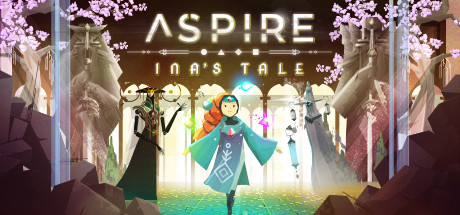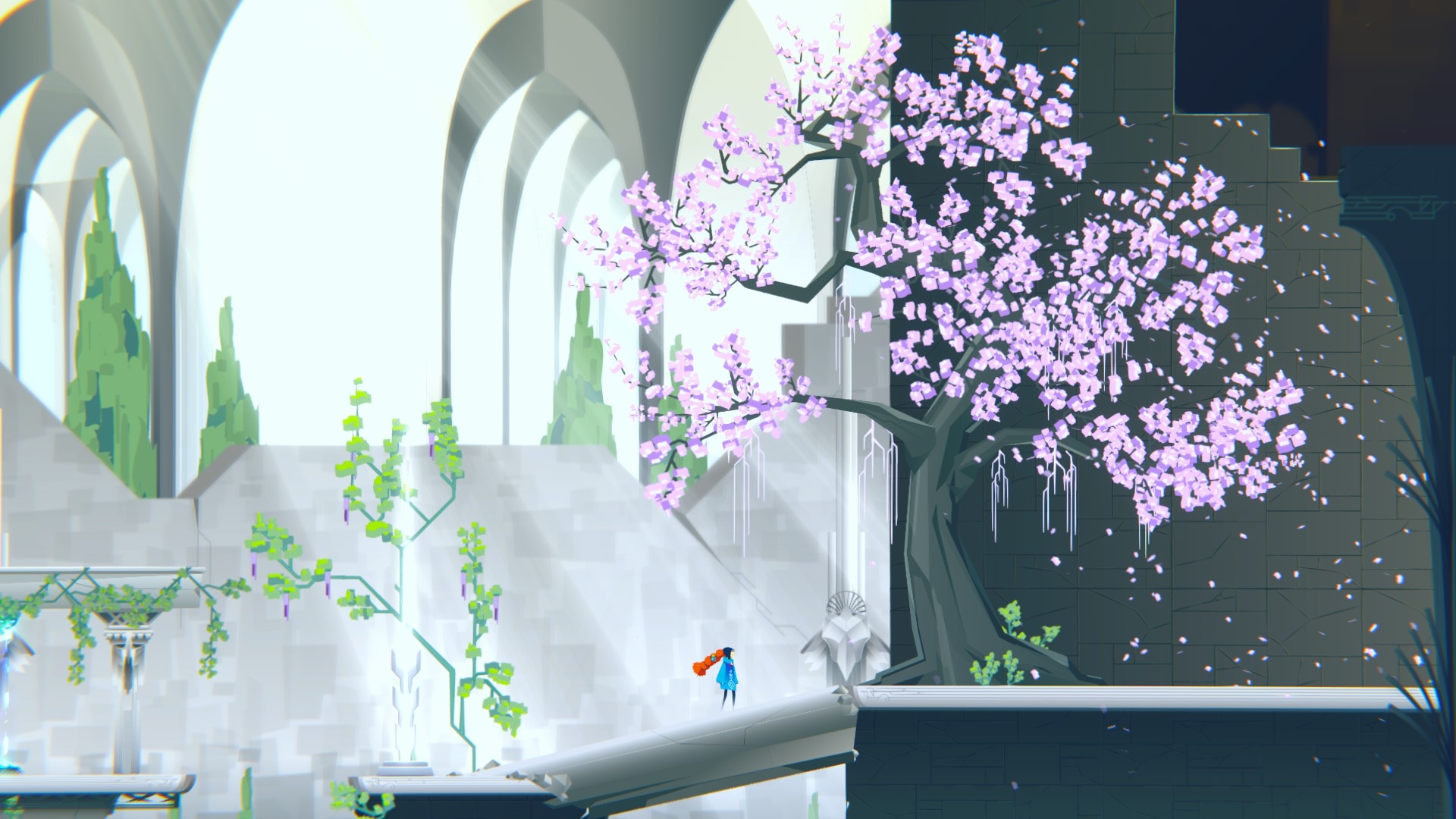
Aspire: Ina’s Tale
There are games that are so impactful that you’d want to remove from your memory only so you can experience them all over again. For many, GRIS is a good example of that: playing through it left countless wanting more. Aspire: Ina’s Tale comes to fill in this exact void, and while it does have a lot of similarities with GRIS, it can hardly be regarded as a mere clone of it: it’s unique, breathtaking and heartwarming in its own specific way and will likely move you and leave a mark on you, just like GRIS did.

In a nutshell, Aspire: Ina’s Tale is a stunning puzzle-platformer targeted at people who prefer to experience a game in a more casual, relaxed way rather than being confronted with a challenge. That doesn’t mean that playing it is trivial: there are bits in which your actions need to be timed at the right moment and some mild speedrun sequences towards the end of the game, but these are usually easily done after a couple of tries and after learning what one is expected to do. The game is intended to be pleasant, immersive, stress-free and thus the puzzles and the platforming aspect are designed so that even non-veteran players can enjoy them. Also, there is no combat and no boss fights.

You play as Ina, a young girl who wakes up trapped inside a ruined tower, without having any knowledge about why or how she got there. Ina remembers Kamiura – her homeland, her family and that she was a priestess there, therefore she embarks on a quest to escape the tower and go back home. Her path is filled with lots of traps and puzzles, but also with mysterious characters that will guide her on the way to the exit. Her priestess training allows her to control light spirits that she then uses to fend off shadow creatures, power up various platforms or activate door pillars, and enlarge blocks in order to reach higher levels. While the first areas teach the player how each of these abilities work, the puzzles towards the end of the game are slightly more complex, often requiring Ina to combine her abilities and the different types of light spirits that she can control.

The selling point of the game is clearly the astonishing art: each area is remarkable in itself, with magnificent graphics depicting a world in which the vegetation conquers the disrepair state of the tower. When Ina moves towards the upper levels, the views start to bloom with vegetation bursting out through the ruins, creating wonderful spring-like panoramas, with cherry trees and flowery vines. As beautiful to look at Aspire: Ina’s Tale is, as beautiful to listen to it is: the score is almost as outstanding as the visuals, and the two of them are perfectly in sync all the time, combining together flawlessly in order to deliver an enrapturing experience. The writing is also top-notch, at times fun and witty, other times deep and meditative. I particularly enjoyed the fact that there are always additional dialogue options that you can explore in order to gather more details about the background story of the tower or of the NPCs, together with information about what your next goal should be or about the main concepts of the game.

Ina moves with elegance and grace, and her jumps feel feather-like, almost ethereal. She can grab onto ledges, although these are never placed too high, nor too far away to become a pixel-hunt challenge. The controls are very good and responsive, and the game can be played both with a controller, or with the mouse and keyboard. Personally, I played through it with a controller, since I found the default placement of the interaction keys being somewhat unintuitive; however, these can easily be changed from the settings.

Another thing that I liked in Aspire: Ina’s Tale is how the collectibles are handled. It’s partially an exploration game, so collectibles are to be expected but usually in games like this one needs to frequently consult a guide, if one wants to be sure not to miss anything – this is something that I dislike to a certain degree because it breaks my immersion in the story. In Aspire: Ina’s Tale there are only four collectibles to gather, and even though all of them are placed outside the main paths, it’s quite clear how to reach them without even needing the help of a guide: there are platforms not used for progression that will instead lead to one of these collectibles.

Just like GRIS, Aspire: Ina’s Tale is a game that isn’t played, but absorbed and lived through. Its three-ish hour run time is admittedly a bit short for the price (albeit much lower than GRIS which has quite the same length), yet it’s satisfying in a way few games really are.